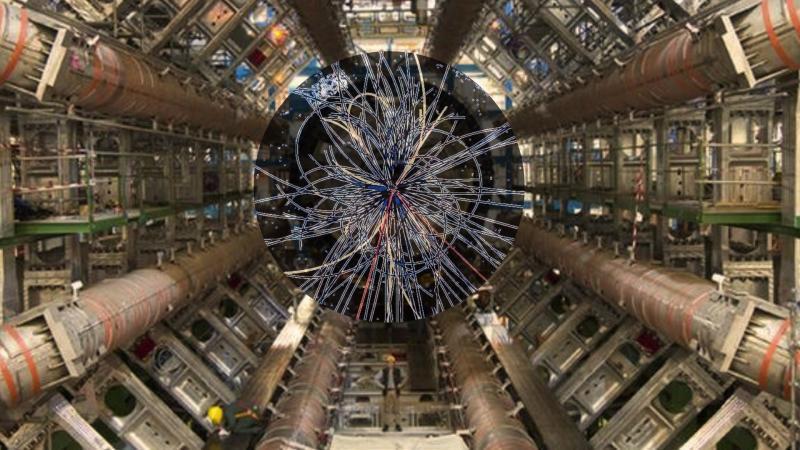
CERN Scientists Shedding Light on Antimatter & Universe’s Origins
Deep beneath the French-Swiss border, the Large Hadron Collider (LHC) at CERN has been making headlines with its groundbreaking discoveries. The latest revelation from the LHC’s ALICE (A Large Ion Collider Experiment) collaboration has sent shockwaves through the scientific community, as researchers confirmed the first-ever evidence of antihyperhelium-4. This remarkable finding has significant implications for our understanding of the fundamental forces of nature and the origins of the universe.
Antimatter: The Mysterious Counterpart
Antimatter has long fascinated scientists, as it represents the mirror image of regular matter. When matter and antimatter come into contact, they annihilate each other, releasing vast amounts of energy. This phenomenon has led to numerous theories and hypotheses about the existence of antimatter in the universe. The discovery of antihyperhelium-4 is a significant step forward in understanding the balance between matter and antimatter, which has far-reaching implications for our comprehension of the cosmos.
ALICE Collaboration Breakthrough
The ALICE collaboration, consisting of researchers from over 40 countries, has been studying heavy-ion collisions at the LHC. By colliding lead ions at nearly the speed of light, the team created an environment that mimics the conditions of the early universe. This extreme scenario allowed them to produce exotic particles, including antihyperhelium-4, in unprecedented quantities.
The ALICE collaboration’s breakthrough discovery was made possible by analyzing the decay products of these heavy-ion collisions. By reconstructing the particles produced in these collisions, the team was able to identify the presence of antihyperhelium-4, a particle that is the antimatter counterpart of hyperhelium-4, a stable isotope of helium.
Implications for Our Understanding of the Universe
The discovery of antihyperhelium-4 has significant implications for our understanding of the universe’s origins. The observation of this exotic particle provides valuable insights into the fundamental forces of nature, which governed the universe’s earliest moments. The finding also sheds light on the matter-antimatter balance, which has puzzled scientists for decades.
The existence of antihyperhelium-4 suggests that antimatter was present in the universe during its early stages, potentially in equal amounts to matter. This equilibrium is crucial for understanding the universe’s evolution, as it may have played a significant role in shaping the universe as we know it today.
The Hunt for Antimatter in the Universe
The discovery of antihyperhelium-4 has sparked a renewed interest in searching for antimatter in the universe. Scientists are now eager to explore the possibility of finding antimatter in other forms, such as antihydrogen or antideuterium. These searches will provide valuable insights into the composition of the universe and the processes that governed its evolution.
The Future of Antimatter Research
The ALICE collaboration’s breakthrough discovery is just the beginning of a new era in antimatter research. As scientists continue to explore the properties of antihyperhelium-4, they will gain a deeper understanding of the fundamental forces that govern the universe.
Future experiments at the LHC and other facilities will focus on creating and studying antimatter in various forms, pushing the boundaries of our knowledge and understanding. The search for antimatter is an exciting and dynamic field, with numerous opportunities for discovery and advancement.
Conclusion
The discovery of antihyperhelium-4 by the ALICE collaboration at CERN’s Large Hadron Collider is a significant milestone in the quest to understand the universe’s origins. This finding has far-reaching implications for our comprehension of the fundamental forces of nature and the balance between matter and antimatter.
As scientists continue to explore the mysteries of antimatter, they will unravel the secrets of the universe, shedding light on the earliest moments of its existence. The journey ahead is filled with excitement and promise, as researchers at CERN and other facilities push the boundaries of human knowledge.
Source:
https://researchmatters.in/news/exotic-antimatter-spotted-heavy-ion-collisions-lhc






